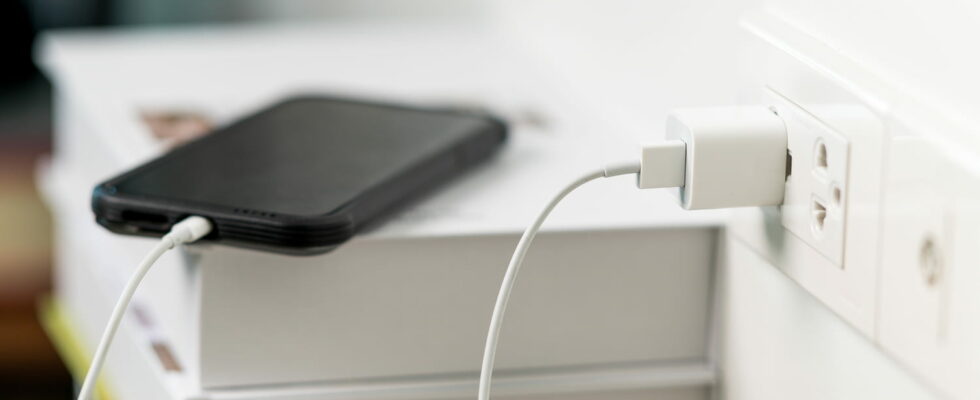Charging your smartphone has become a daily ritual for millions of French people. But it’s time to give up this very common practice that increases your electricity bills.
Charging your smartphone is a habit among many others that punctuates our daily lives. As soon as the battery of our mobile phones starts to empty, the reflex is always the same: plug the device into a socket using its charger. It is estimated that a mobile phone is recharged on average once or twice a day. It all depends on the use and the capacity of the battery.
Such methods necessarily represent a cost that is reflected in your bills. The transmission network manager (RTE) estimates that a phone charger consumes on average 0.015 kWh for a 3-hour charging cycle and a charger with a power of 5 watts. Over a year, this represents an annual consumption of 5.48 kWh, or an expense of 1.38 euros at the regulated EDF rate. This amount remains very low on your bills, but a common practice can very easily increase it.
Once the device is fully charged, we all tend to unplug it. So far, so good, except that the charger remains plugged into the socket most of the time. What might surprise you is that the charger consumes electricity even when it is not connected to a device. The electricity consumption remains low, but eIt can be significant if chargers plugged in within a home are many.
In 2022, the French electricity supplier Engie conducted an experiment with six chargers plugged simultaneously into a power strip. The results were that the average consumption of these chargers over a year represented an additional 40 cents on an electricity bill. At a time when the price of electricity continues to rise, all tricks are good to take to lower the price of his bill.
In addition to wasting your money, it turns out that chargers that are plugged in continuously are dangerous for the planet. They accumulate heat and, if they overheat, can cause fires. Poor quality or poor condition of the product can increase this risk. In addition to that, a plugged-in charger can be harmful to the charger itself. It deteriorates more quickly and becomes less efficient. For safety reasons, we recommend that you remember to unplug your chargers after each use.

